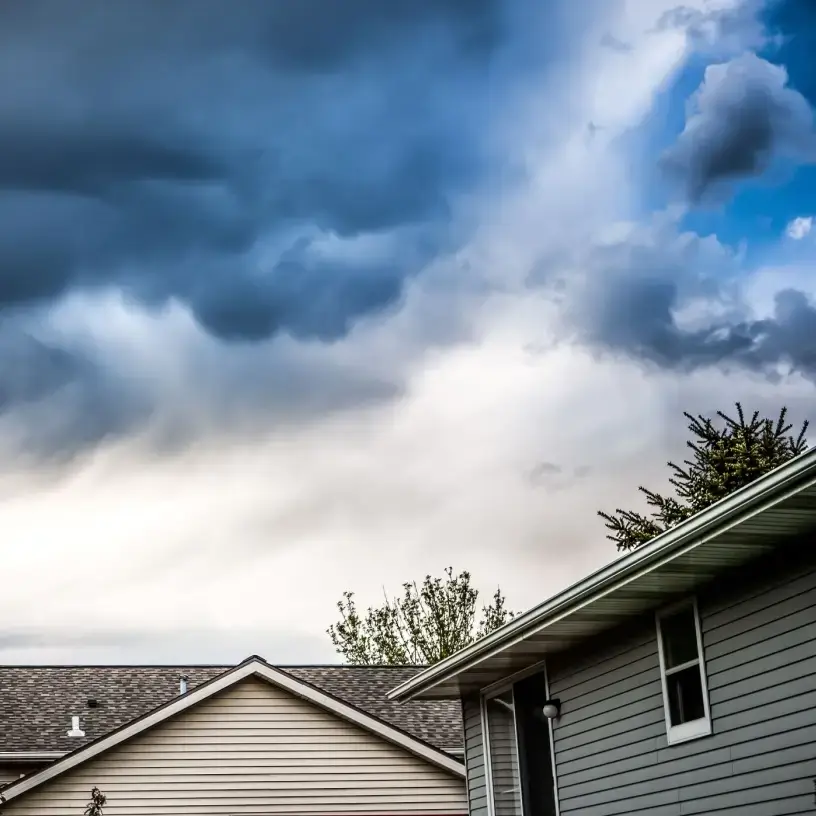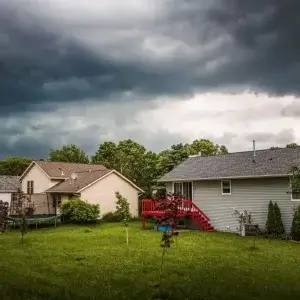Home / Compare Home And Content… / Home and contents insura…
Home and contents insurance for storm damage
Is your home ready for storms? Don’t get caught out by changing weather



Key takeaways
- A storm is considered a defined event and is typically covered in your home insurance policy.
- Home insurance covers the structural elements of your property, while a contents insurance policy covers damaged items in your home.
- Renters don’t need to purchase home insurance, but they might consider contents insurance to cover their belongings.
Expert tips for preparing your home for storms
Our home and contents insurance expert, Adrian Taylor, has helpful tips for protecting your property during a storm.

Make sure your gutters are clear for drainage
Ensure your gutters are clear of leaves and other items that would prevent the rain from draining effectively. If you live close to large trees, consider installing leaf guards to ensure your gutters and downpipes can work effectively.
Secure all outdoor furniture
See that all outdoor furniture is secured or can be stored away quickly if a storm approaches.
Check your backyard for dead trees and branches
Regularly check trees to ensure any dead or overhanging branches are removed or made safe to prevent damage if there are high winds.
Update your sum insured
Make sure you’ve accurately evaluated the cost to rebuild/replace your home and its contents, so if they’re destroyed, the sum insured on your insurance policy is adequate.
Tune in to news and weather updates
Keep an eye on the weather and news reports so that you have time to act when needed. If your home insurer provides SMS alerts, make sure you pay attention to these and respond accordingly.
Cover for damage caused by a storm
Does home insurance cover storm damage?
 Since storms are generally considered defined events, home and contents insurance typically covers damage caused by them. Cover for storms could provide financial protection from a range of weather and natural events that could:
Since storms are generally considered defined events, home and contents insurance typically covers damage caused by them. Cover for storms could provide financial protection from a range of weather and natural events that could:
- Cause damage that needs to be repaired
- Leave your home uninhabitable (temporary accommodation may be covered)
- Cause a loss of value to your home or possessions.
Always read your policy’s Product Disclosure Statement (PDS), as it outlines the events you may receive financial cover for if your property suffers storm damage.
What is considered storm damage?
Insurers may each have their own definition of storm damage, but it’s usually damage and loss caused by:
- Storms
- Thunderstorms
- Lightning
- Hail
- Rainwater
- Runoff
- Storm surges
- Land gales.
Keep in mind that cover for flood damage is not the same as storm damage cover. Flood cover isn’t always included in standard home and contents insurance policies, but it may be an optional extra that you can include at an additional cost.
Cover may vary depending on your insurer, so you should always read the PDS of any policy before you buy it. The Target Market Determination (TMD) may also help you figure out if the product is right for you.
What types of storm damage aren't covered by home and contents insurance?
While home and contents insurance can cover a wide variety of events and damages, there are some exclusions where your claim might be rejected, including:
- Loss or damage caused by actions of the sea (e.g. high tides, rise in sea levels)
- Water that entered your home because of renovations or poorly maintained gutters
- Underground water seepage or pressure
- Hydrostatic pressure
- Soil movements that didn’t occur immediately after a storm or rainwater runoff
- Loss or damage to retaining walls, gardens, driveways, paths and pavers.
How much is home insurance with storm cover?
The cost of your home insurance will depend on a range of factors. Premiums can be impacted by:
- Your sum insured (the maximum amount your insurer will pay if your home is damaged or destroyed)
- The age and structure of your property
- Where you live (you may pay more if you’re in an area prone to natural disasters like floods, storms and bushfires)
- Your age and the age of other people listed on your policy
- Your claims history
- Your home security
- Your optional cover options
- Your excess amount (the sum you pay towards your claim)
- Stamp duty, GST and any other applicable government charges.
Important to know
When is storm season?
Storm season in Australia is generally from November to April.1 However, severe weather events like heavy rain, strong winds, hailstorms and even thunder and lightning can happen any time of the year. For that reason, storm cover could be essential to have as a financial safeguard for your home and contents.
What should I do if my home has sustained storm damage?
 If your property has been damaged during a storm, the Queensland Fire and Emergency Services (QFES) advises following these simple steps:2
If your property has been damaged during a storm, the Queensland Fire and Emergency Services (QFES) advises following these simple steps:2
- If there is a life-threatening emergency, call 000 immediately.
- Contact the State Emergency Service (SES) if there’s a storm-related emergency at your property.
- Stay away from fallen trees or power lines.
- Assess the property for damage.
- Check weather updates.
- Check if your neighbours are ok if it’s safe to do so.
After you’ve lodged a storm damage insurance claim, your insurer may send an assessor to inspect your property. They’ll provide the insurer with their findings, which will help the insurer decide whether to accept or decline your claim.
If the assessor can’t determine whether the damage was caused by a storm or flood water, they may organise a hydrologist (a water specialist) to assess your property and the surrounding area to determine the exact cause of the damage.
Many insurance policies also include cover for temporary accommodation if your property is uninhabitable because of storm damage, so be sure to check your PDS for this benefit should a storm hit your area.
What other natural disasters are covered by home and contents?
Along with storm damages, home and contents insurance policies may also cover fires, earthquakes and floods either as standard inclusions or optional cover.
Meet our home and contents insurance expert, Adrian Taylor
As a General Insurance expert with over 13 years’ experience in financial services, Adrian Taylor works to make it easier for homeowners, renters and landlords to protect their home and contents. He believes it’s important for all residents (whether they rent, own or lease) to have adequate financial cover for their property and belongings in case the worse should happen.
Want to know more about home and contents insurance?
- Bureau of Meteorology – Tropical cyclone climatology. Accessed May 2024.
- Queensland Fire and Emergency Services – Storm. Accessed May 2024.
